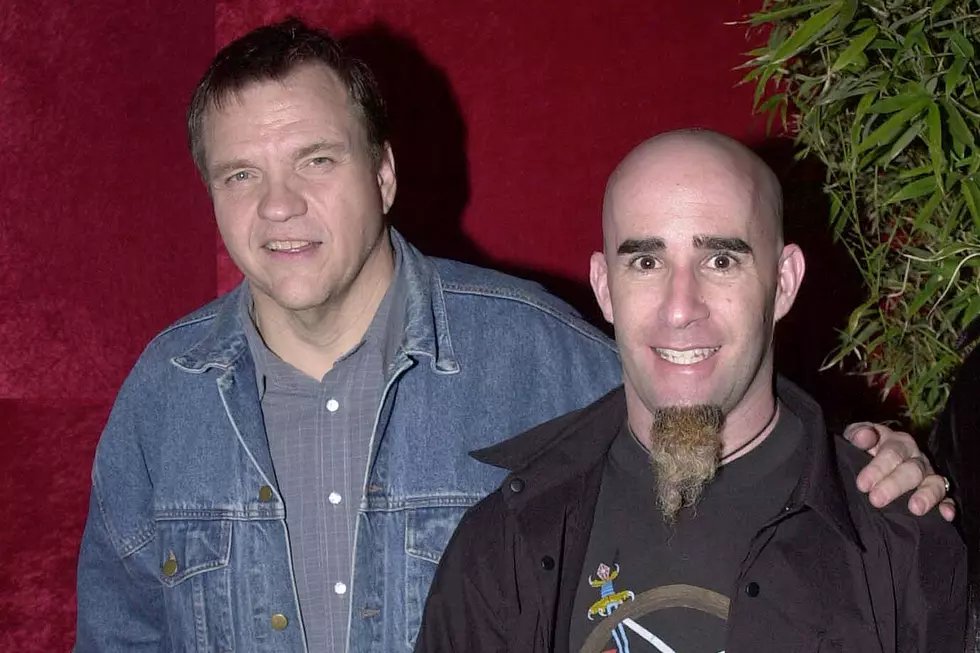
How Anthrax Pushed Back Against Backlash on ‘Persistence of Time’
By 1990, Anthrax were easily one the world's most successful heavy metal bands. Their ascension to that post, however, had not come without its lumps and bumps – many of them in recent years. In that way, titling their Aug. 21, 1990, release Persistence of Time was apt.
Vocalist Joey Belladonna, lead guitarist Dan Spitz, rhythm guitarist Scott Ian, bassist Frank Bello and drummer Charlie Benante had specialized in tackling thought-provoking subjects with their lyrics, backing them with complex and aggressive speed metal, and even popularizing the genre's very jargon (with words like "mosh" and "not!," etc.) while leading the charge in heavy metal's dalliance with rap.
Amazingly, by the end of the '80s, some of these breakthroughs had resulted in something of a backlash. Anthrax's playful crossover into rap with the I'm the Man EP, delivered after a bona fide thrash cornerstone in 1987's Among the Living, was seen by some as too drastic an experiment. Their next full length, 1988's State of Euphoria, was conversely tagged as too predictable. It seemed as though certain elements of the heavy metal community had it out for Anthrax. Then a fire ripped through the band's equipment storage space – destroying over $100,000 of their prized instruments and other gear.
So, it's likely that an embattled frame of mind inspired the dark, focused, even angry musical response of Persistence of Time. Intricate songs like "Time," "Keep It in the Family" and "Gridlock" were altogether dense, tense and terse in their delivery. Others, like "Blood," "In My World" and "Belly of the Beast," were nearly as uncompromising, despite making a little room for undeniable hooks. Tough tracks like "H8 Red," "One Man Stands" and even the refreshingly speedy "Discharge" probably had some listeners screaming "Uncle, uncle!"
Watch the Video for Anthrax's Cover of Joe Jackson's "Got the Time"
Anthrax's ruthless musical retort to all their naysayers was only suspended long enough for a comparatively giddy thrashing of Joe Jackson's "Got the Time," a move which maintained the band's penchant for clever and unconventional covers. It also earned them some much needed MTV and radio airplay and helped the album on its drive to gold certification over the next six months. Critics and fans took notice that Anthrax meant business, whether they fully accepted Persistence of Time's remorseless musical approach or not.
From there, Anthrax carried on catering to their core fan base, hitting the road with Slayer, Megadeth and Alice in Chains for the now legendary Clash of the Titans Tour. Even so, they would not be cowed by the metal community's more conservative element, subsequently spending much of 1991 further bridging the divide between rock and rap with their historic recording and touring collaborations with Public Enemy.
What Anthrax couldn't control, ironically, was the inexorable march of time. The years to come would see musical trends turned upside down by alternative rock, led by the likes of Nirvana, Pearl Jam, Soundgarden, Alice in Chains and Jane's Addiction – the latter pair having coincidentally released their paradigm-shifting albums, Facelift and Ritual de lo Habitual, on the very same day as Persistence of Time.
Along the way, Anthrax never wavered from this album's message of endurance. Still, dramatic changes would arrive. They departed for Island Records for the more metal-friendly Elektra (home to Metallica and Motley Crue, among others), saw Belladonna replaced by former Armored Saint frontman John Bush, then eventually retooled for 1993's courageous Sound of White Noise and the albums beyond.
Top 50 Classic Heavy Metal Albums
More From Ultimate Classic Rock









